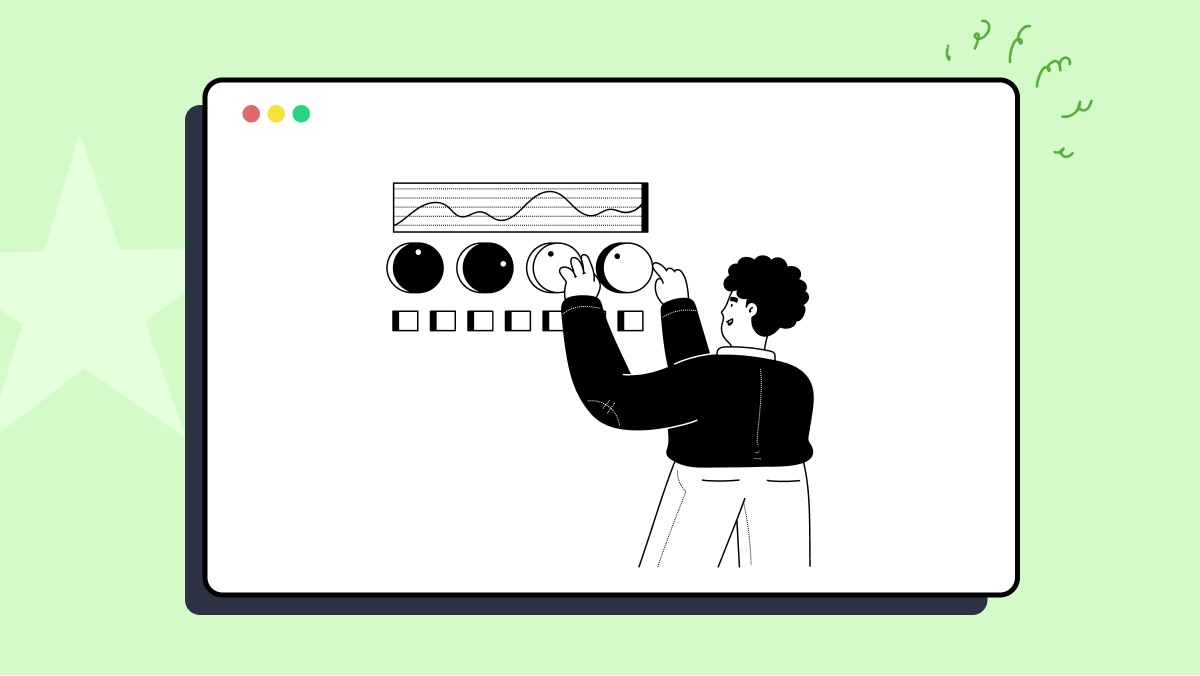How to use apickli method in apickli
Best JavaScript code snippet using apickli
apickli-gherkin.js
Source: apickli-gherkin.js
1const prettyJson = require('prettyjson');2const {Before, Given, When, Then} = require('cucumber');3const stepContext = {};4const prettyPrintJson = function(json) {5 const output = {6 stepContext,7 testOutput: json,8 };9 return prettyJson.render(output, {10 noColor: true,11 });12};13const callbackWithAssertion = function(callback, assertion) {14 if (assertion.success) {15 callback();16 } else {17 callback(prettyPrintJson(assertion));18 }19};20Before(function(scenarioResult, callback) {21 // https://github.com/cucumber/cucumber-js/issues/89122 // stepContext.step = step.getName;23 // stepContext.scenario = scenario.getName;24 callback();25});26Given(/^I set (.*) header to (.*)$/, function(headerName, headerValue, callback) {27 this.apickli.addRequestHeader(headerName, headerValue);28 callback();29});30Given(/^I set cookie to (.*)$/, function(cookie, callback) {31 this.apickli.addCookie(cookie);32 callback();33});34Given(/^I set headers to$/, function(headers, callback) {35 this.apickli.setHeaders(headers.hashes());36 callback();37});38Given(/^I set body to (.*)$/, function(bodyValue, callback) {39 this.apickli.setRequestBody(bodyValue);40 callback();41});42Given(/^I pipe contents of file (.*) to body$/, function(file, callback) {43 this.apickli.pipeFileContentsToRequestBody(file, function(error) {44 if (error) {45 callback(new Error(error));46 }47 callback();48 });49});50Given(/^I set query parameters to$/, function(queryParameters, callback) {51 this.apickli.setQueryParameters(queryParameters.hashes());52 callback();53});54Given(/^I set form parameters to$/, function(formParameters, callback) {55 this.apickli.setFormParameters(formParameters.hashes());56 callback();57});58Given(/^I have basic authentication credentials (.*) and (.*)$/, function(username, password, callback) {59 this.apickli.addHttpBasicAuthorizationHeader(username, password);60 callback();61});62Given(/^I have (.+) client TLS configuration$/, function(configurationName, callback) {63 this.apickli.setClientTLSConfiguration(configurationName, function(error) {64 if (error) {65 callback(new Error(error));66 }67 callback();68 });69});70When(/^I GET (.*)$/, function(resource, callback) {71 this.apickli.get(resource, function(error, response) {72 if (error) {73 callback(new Error(error));74 }75 callback();76 });77});78When(/^I POST to (.*)$/, function(resource, callback) {79 this.apickli.post(resource, function(error, response) {80 if (error) {81 callback(new Error(error));82 }83 callback();84 });85});86When(/^I PUT (.*)$/, function(resource, callback) {87 this.apickli.put(resource, function(error, response) {88 if (error) {89 callback(new Error(error));90 }91 callback();92 });93});94When(/^I DELETE (.*)$/, function(resource, callback) {95 this.apickli.delete(resource, function(error, response) {96 if (error) {97 callback(new Error(error));98 }99 callback();100 });101});102When(/^I PATCH (.*)$/, function(resource, callback) {103 this.apickli.patch(resource, function(error, response) {104 if (error) {105 callback(new Error(error));106 }107 callback();108 });109});110When(/^I request OPTIONS for (.*)$/, function(resource, callback) {111 this.apickli.options(resource, function(error, response) {112 if (error) {113 callback(new Error(error));114 }115 callback();116 });117});118Then(/^response header (.*) should exist$/, function(header, callback) {119 const assertion = this.apickli.assertResponseContainsHeader(header);120 callbackWithAssertion(callback, assertion);121});122Then(/^response header (.*) should not exist$/, function(header, callback) {123 const assertion = this.apickli.assertResponseContainsHeader(header);124 assertion.success = !assertion.success;125 callbackWithAssertion(callback, assertion);126});127Then(/^response body should be valid (xml|json)$/, function(contentType, callback) {128 const assertion = this.apickli.assertResponseBodyContentType(contentType);129 callbackWithAssertion(callback, assertion);130});131Then(/^response code should be (.*)$/, function(responseCode, callback) {132 const assertion = this.apickli.assertResponseCode(responseCode);133 callbackWithAssertion(callback, assertion);134});135Then(/^response code should not be (.*)$/, function(responseCode, callback) {136 const assertion = this.apickli.assertResponseCode(responseCode);137 assertion.success = !assertion.success;138 callbackWithAssertion(callback, assertion);139});140Then(/^response header (.*) should be (.*)$/, function(header, expression, callback) {141 const assertion = this.apickli.assertHeaderValue(header, expression);142 callbackWithAssertion(callback, assertion);143});144Then(/^response header (.*) should not be (.*)$/, function(header, expression, callback) {145 const assertion = this.apickli.assertHeaderValue(header, expression);146 assertion.success = !assertion.success;147 callbackWithAssertion(callback, assertion);148});149Then(/^response body should contain (.*)$/, function(expression, callback) {150 const assertion = this.apickli.assertResponseBodyContainsExpression(expression);151 callbackWithAssertion(callback, assertion);152});153Then(/^response body should not contain (.*)$/, function(expression, callback) {154 const assertion = this.apickli.assertResponseBodyContainsExpression(expression);155 assertion.success = !assertion.success;156 callbackWithAssertion(callback, assertion);157});158Then(/^response body path (.*) should be (((?!of type).*))$/, function(path, value, callback) {159 const assertion = this.apickli.assertPathInResponseBodyMatchesExpression(path, value);160 callbackWithAssertion(callback, assertion);161});162Then(/^response body path (.*) should not be (((?!of type).+))$/, function(path, value, callback) {163 const assertion = this.apickli.assertPathInResponseBodyMatchesExpression(path, value);164 assertion.success = !assertion.success;165 callbackWithAssertion(callback, assertion);166});167Then(/^response body path (.*) should be of type array$/, function(path, callback) {168 const assertion = this.apickli.assertPathIsArray(path);169 callbackWithAssertion(callback, assertion);170});171Then(/^response body path (.*) should be of type array with length (.*)$/, function(path, length, callback) {172 const assertion = this.apickli.assertPathIsArrayWithLength(path, length);173 callbackWithAssertion(callback, assertion);174});175Then(/^response body should be valid according to schema file (.*)$/, function(schemaFile, callback) {176 this.apickli.validateResponseWithSchema(schemaFile, function(assertion) {177 callbackWithAssertion(callback, assertion);178 });179});180Then(/^response body should be valid according to openapi description (.*) in file (.*)$/, function(definitionName, swaggerSpecFile, callback) {181 this.apickli.validateResponseWithSwaggerSpecDefinition(definitionName, swaggerSpecFile, function(assertion) {182 callbackWithAssertion(callback, assertion);183 });184});185Then(/^I store the value of body path (.*) as access token$/, function(path, callback) {186 this.apickli.setAccessTokenFromResponseBodyPath(path);187 callback();188});189When(/^I set bearer token$/, function(callback) {190 this.apickli.setBearerToken();191 callback();192});193Given(/^I store the raw value (.*) as (.*) in scenario scope$/, function(value, variable, callback) {194 this.apickli.storeValueInScenarioScope(variable, value);195 callback();196});197Then(/^I store the value of response header (.*) as (.*) in global scope$/, function(headerName, variableName, callback) {198 this.apickli.storeValueOfHeaderInGlobalScope(headerName, variableName);199 callback();200});201Then(/^I store the value of body path (.*) as (.*) in global scope$/, function(path, variableName, callback) {202 this.apickli.storeValueOfResponseBodyPathInGlobalScope(path, variableName);203 callback();204});205Then(/^I store the value of response header (.*) as (.*) in scenario scope$/, function(name, variable, callback) {206 this.apickli.storeValueOfHeaderInScenarioScope(name, variable);207 callback();208});209Then(/^I store the value of body path (.*) as (.*) in scenario scope$/, function(path, variable, callback) {210 this.apickli.storeValueOfResponseBodyPathInScenarioScope(path, variable);211 callback();212});213Then(/^value of scenario variable (.*) should be (.*)$/, function(variableName, variableValue, callback) {214 if (this.apickli.assertScenarioVariableValue(variableName, variableValue)) {215 callback();216 } else {217 callback(new Error('value of variable ' + variableName + ' isn\'t equal to ' + variableValue));218 }...init.js
Source: init.js
1'use strict';2const apickli = require('apickli');3const {Before, setDefaultTimeout} = require('cucumber');4Before(function() {5 this.apickli = new apickli.Apickli('http', '');6 this.apickli.addRequestHeader('Cache-Control', 'no-cache');7 this.apickli.setGlobalVariable('apigeeOrg', 'orgeTest');8 this.apickli.setGlobalVariable('apigeeDeveloper', 'ejemploDeveloper');9 this.apickli.setGlobalVariable('apigeeApp', 'ejemploApp');10 this.apickli.setGlobalVariable('apigeeUsername', 'user');11 this.apickli.setGlobalVariable('apigeePassword', 'pwd');12 this.apickli.setGlobalVariable('deploymentSuffix', 'v1');13 this.apickli.setGlobalVariable('apigeeHost', 'localhost:9000');14 this.apickli.setGlobalVariable('apigeeDomain', 'localhost:9000');15 this.apickli.setGlobalVariable('apigeeOauthEndpoint', 'oauth2/v1/token');16 this.apickli.clientTLSConfig = {17 valid: { 18 key: './cert/client-key.pem',19 cert: './cert/client-crt.pem',20 ca: './cert/ca-crt.pem',21 },22 };23 24});...Using AI Code Generation
1var Apickli = require('apickli');2var apickli = new Apickli.Apickli('http', 'localhost:8000');3apickli.addRequestHeader('Content-Type', 'application/json');4apickli.addRequestHeader('Accept', 'application/json');5apickli.get('/api/v1/employees', function (error, response) {6 if (error) {7 console.log('error:', error);8 } else {9 console.log('statusCode:', response && response.statusCode);10 console.log('body:', response.body);11 }12});13apickli.post('/api/v1/employees', function (error, response) {14 if (error) {15 console.log('error:', error);16 } else {17 console.log('statusCode:', response && response.statusCode);18 console.log('body:', response.body);19 }20});21apickli.put('/api/v1/employees', function (error, response) {22 if (error) {23 console.log('error:', error);24 } else {25 console.log('statusCode:', response && response.statusCode);26 console.log('body:', response.body);27 }28});29apickli.delete('/api/v1/employees', function (error, response) {30 if (error) {31 console.log('error:', error);32 } else {33 console.log('statusCode:', response && response.statusCode);34 console.log('body:', response.body);35 }36});37body: {"status":"success","data":{"employees":[{"id":1,"first_name":"John","last_name":"Doe","email":"Using AI Code Generation
1var apickli = require('apickli');2var {defineSupportCode} = require('cucumber');3defineSupportCode(function({Given, Then, When}) {4 Given('I set header {string} to {string}', function (headerName, headerValue, callback) {5 this.apickli.addRequestHeader(headerName, headerValue);6 callback();7 });8 Given('I set the request body to {string}', function (body, callback) {9 this.apickli.setRequestBody(body);10 callback();11 });12 When('I call the {string} resource', function (resource, callback) {13 this.apickli.get(resource, callback);14 });15 Then('the response status code should be {int}', function (statusCode, callback) {16 this.apickli.assertResponseCode(statusCode);17 callback();18 });19 Then('the response should contain {string}', function (responseText, callback) {20 this.apickli.assertResponseBodyContains(responseText);21 callback();22 });23});24 Given I set the request body to "{'test':'test'}"25 Given I set the request body to "{'test':'test'}"261 scenario (1 passed)275 steps (5 passed)Using AI Code Generation
1var apickli = require('apickli');2var {defineSupportCode} = require('cucumber');3defineSupportCode(function({Given}) {4 Given('I set header {string} to {string}', function (header, value) {5 this.apickli.addRequestHeader(header, value);6 });7});8var {defineSupportCode} = require('cucumber');9defineSupportCode(function({Given}) {10 Given('I set header {string} to {string}', function (header, value) {11 this.apickli.addRequestHeader(header, value);12 });13});14var apickli = require('apickli');15var {defineSupportCode} = require('cucumber');16defineSupportCode(function({setWorldConstructor}) {17 setWorldConstructor(function() {18 this.apickli = new apickli.Apickli('http', 'localhost:8080');19 });20});21var {defineSupportCode} = require('cucumber');22defineSupportCode(function({Given}) {23 Given('I set header {string} to {string}', function (header, value) {24 this.apickli.addRequestHeader(header, value);25 });26});27var apickli = require('apickli');28var {defineSupportCode} = require('cucumber');29defineSupportCode(function({setWorldConstructor}) {30 setWorldConstructor(function() {31 this.apickli = new apickli.Apickli('http', 'localhost:8080');32 });33});34var {defineSupportCode} = require('cucumber');35defineSupportCode(function({Given}) {36 Given('I set header {string} to {string}', function (header, value) {37 this.apickli.addRequestHeader(header, value);38 });39});40var apickli = require('apickli');41var {defineSupportCode} = require('cucumber');42defineSupportCode(function({setWorldConstructor}) {43 setWorldConstructor(function() {44 this.apickli = new apickli.Apickli('http', 'localhost:8080');45 });46});Using AI Code Generation
1var apickli = require('apickli');2var {defineSupportCode} = require('cucumber');3defineSupportCode(function({Given, When, Then}) {4 Given('I set header Content-Type to application/json', function(callback) {5 this.apickli.addRequestHeader('Content-Type', 'application/json');6 callback();7 });8 When('I GET /test', function(callback) {9 this.apickli.get('/test', callback);10 });11 Then('I should see status code 200', function(callback) {12 this.apickli.assertResponseCode('200');13 callback();14 });15 Then('I should see response body with value {string}', function(value, callback) {16 this.apickli.assertResponseBodyContains(value);17 callback();18 });19});201 scenario (1 passed)213 steps (3 passed)Using AI Code Generation
1const apickli = require('apickli');2const {defineSupportCode} = require('cucumber');3defineSupportCode(function({Given, Then, When}) {4 Given('I set header Content-Type to application/json', function(callback) {5 this.apickli.addRequestHeader('Content-Type', 'application/json');6 callback();7 });8 When('I set body to {string}', function(body, callback) {9 this.apickli.setRequestBody(body);10 callback();11 });12 When('I POST to {string}', function(path, callback) {13 this.apickli.post(path, callback);14 });15 Then('I should get HTTP response code {int}', function(statusCode, callback) {16 this.apickli.assertResponseCode(statusCode);17 callback();18 });19 Then('I should get response header {string} with value {string}', function(header, value, callback) {20 this.apickli.assertResponseHeader(header, value);21 callback();22 });23 Then('I should get response body containing {string}', function(body, callback) {24 this.apickli.assertResponseBodyContains(body);25 callback();26 });27});28 When I set body to {"test":"test"}29 Then I should get response body containing {"test":"test"}30{31 "scripts": {32 },33 "dependencies": {34 }35}36 at Function.Module._resolveFilename (module.js:547:15)37 at Function.Module._load (module.js:474:25)Using AI Code Generation
1module.exports = function() {2 this.Given(/^I am on the homepage$/, function (callback) {3 callback.pending();4 });5 this.When(/^I click on login$/, function (callback) {6 callback.pending();7 });8 this.Then(/^I should be on the login page$/, function (callback) {9 callback.pending();10 });11};Blogs
Check out the latest blogs from LambdaTest on this topic:
In general, software testers have a challenging job. Software testing is frequently the final significant activity undertaken prior to actually delivering a product. Since the terms “software” and “late” are nearly synonymous, it is the testers that frequently catch the ire of the whole business as they try to test the software at the end. It is the testers who are under pressure to finish faster and deem the product “release candidate” before they have had enough opportunity to be comfortable. To make matters worse, if bugs are discovered in the product after it has been released, everyone looks to the testers and says, “Why didn’t you spot those bugs?” The testers did not cause the bugs, but they must bear some of the guilt for the bugs that were disclosed.
I was once asked at a testing summit, “How do you manage a QA team using scrum?” After some consideration, I realized it would make a good article, so here I am. Understand that the idea behind developing software in a scrum environment is for development teams to self-organize.
 QA testers have a unique role and responsibility to serve the customer. Serving the customer in software testing means protecting customers from application defects, failures, and perceived failures from missing or misunderstood requirements. Testing for known requirements based on documentation or discussion is the core of the testing profession. One unique way QA testers can both differentiate themselves and be innovative occurs when senseshaping is used to improve the application user experience.
QA testers have a unique role and responsibility to serve the customer. Serving the customer in software testing means protecting customers from application defects, failures, and perceived failures from missing or misunderstood requirements. Testing for known requirements based on documentation or discussion is the core of the testing profession. One unique way QA testers can both differentiate themselves and be innovative occurs when senseshaping is used to improve the application user experience.
Hey everyone! We hope you had a great Hacktober. At LambdaTest, we thrive to bring you the best with each update. Our engineering and tech teams work at lightning speed to deliver you a seamless testing experience.
Automation Testing Tutorials
Learn to execute automation testing from scratch with LambdaTest Learning Hub. Right from setting up the prerequisites to run your first automation test, to following best practices and diving deeper into advanced test scenarios. LambdaTest Learning Hubs compile a list of step-by-step guides to help you be proficient with different test automation frameworks i.e. Selenium, Cypress, TestNG etc.
LambdaTest Learning Hubs:
- JUnit Tutorial
- TestNG Tutorial
- Webdriver Tutorial
- WebDriverIO Tutorial
- Protractor Tutorial
- Selenium 4 Tutorial
- Jenkins Tutorial
- NUnit Tutorial
- Jest Tutorial
- Playwright Tutorial
- Cypress Tutorial
- PyTest Tutorial
YouTube
You could also refer to video tutorials over LambdaTest YouTube channel to get step by step demonstration from industry experts.
Try LambdaTest Now !!
Get 100 minutes of automation test minutes FREE!!


